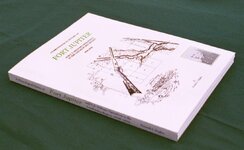joshjavwhite
Tenderfoot
- Jan 4, 2013
- 7
- 0
- Detector(s) used
- Garrett GTAX1250
- Primary Interest:
- All Treasure Hunting
I have a few questions for anybody out there with info about steamboat wrecks in rivers and finding their lost treasure:
1) I have read several accounts of wrecks from the 1800's of them being "30 miles above a town or below" Does above and below simply refer to north and south? Or up-river and down-river?
2) How far up and down the river banks are artifacts likely to have traveled?
3) Are there any good resources to find such wrecks other than Lloyds Steamboat Directory?
4) Any good resources to locate ship wrecks prior to the advent of steamboats?
Thanks for any help!! I live along one of the major waterways in the USA and feel like theres some good stuff out there and any advice would be greatly appreciated!
1) I have read several accounts of wrecks from the 1800's of them being "30 miles above a town or below" Does above and below simply refer to north and south? Or up-river and down-river?
2) How far up and down the river banks are artifacts likely to have traveled?
3) Are there any good resources to find such wrecks other than Lloyds Steamboat Directory?
4) Any good resources to locate ship wrecks prior to the advent of steamboats?
Thanks for any help!! I live along one of the major waterways in the USA and feel like theres some good stuff out there and any advice would be greatly appreciated!








